|
Printables |
PowerPoints |
Online exercises |

|
B1 Exploring 25 compound adjectives
Compound adjectives provide a more specific description than single adjectives. For example, �high-speed train� is more precise than just �fast train.� This precision helps convey exact meanings and avoids ambiguity.In formal writing, such as academic papers or professional reports, compound adjectives can make descriptions more precise and your ar...
Level: intermediate
Age: 10-100
Type:
Downloads: 103
|
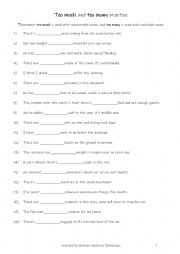
|
Too much and too many practise
Too much and too many practise
Students read the sentences and work out if the sentence needs to be completed with too much or too many.
*Remember too much is used with uncountable nouns, and too many is used with countable nouns
Level: elementary
Age: 10-100
Type:
Downloads: 106
|
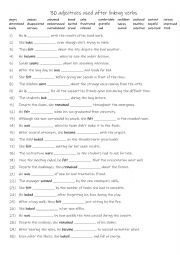
|
B1-B2 30 adjectives used after linking verbs
Learning adjectives used after linking verbs is important because they help describe or provide more information about the subject of a sentence, making communication clearer and more precise. These adjectives often express qualities, conditions, or states of being, and are essential for forming meaningful descriptions, like "She seems tired" or "T...
Level: intermediate
Age: 9-100
Type:
Downloads: 115
|
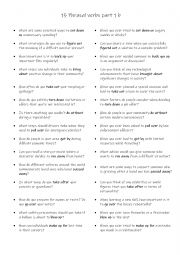
|
15 Phrasal verbs part 1 b
This is a speaking reinforcement activity for the phrasal verbs in Part 1 A. It contains 2 questions for each of the 15 phrasal verb. Suitable for pair work or small groups.This worksheet is suitable for CEFR A2-B1 level students.
Level: elementary
Age: 10-100
Type: worksheet
Downloads: 102
|
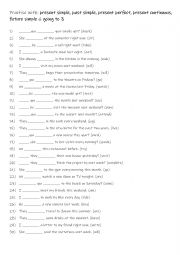
|
A2+-B1 Practise with present simple, past simple, present perfect, present continuous, future simple & going to 3
Mastering these tenses allows students to describe habits, routines, actions in progress, past events, completed actions, future plans, and intentions. By using them correctly, students can effectively communicate in various real-life situations, such as talking about daily activities, telling stories, making predictions, and expressing plans or de...
Level: elementary
Age: 9-100
Type:
Downloads: 142
|
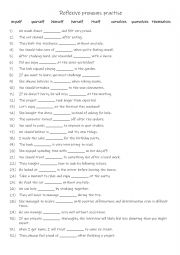
|
A2-B1 Reflexive pronouns practise
Learning reflexive pronouns is essential for effective communication and grammar accuracy, as they indicate when the subject and object of a sentence are the same (e.g., "I made myself a sandwich"). They also provide emphasis (e.g., "She did it herself") and enhance the complexity of sentences (e.g., "We enjoyed ourselves at the party"). Mastering ...
Level: elementary
Age: 8-100
Type:
Downloads: 131
|
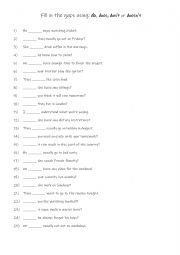
|
Fill in the gaps using: do, does, don�t or doesn�t
Students read and complete the sentences / questions using the correct form of auxiliary verb do. Answers are on page 2
Level: elementary
Age: 10-100
Type:
Downloads: 128
|
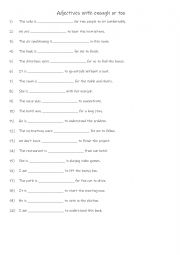
|
A1+-A2 Adjectives with enough or too
Students read the sentences to see which word is needed to complete the gap-fill. Answers on page 2.
Level: elementary
Age: 8-100
Type:
Downloads: 105
|
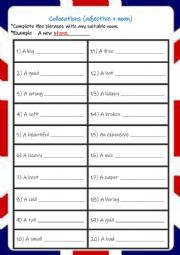
|
Adjective noun collocation
Students write a short sentence using a suitable noun to form a common collocation. As a class activity students get one point for writing a suitable noun and two points for writing a noun different to their classmates. This worksheet is suitable for A1-A2 students.
Level: elementary
Age: 8-100
Type:
Downloads: 270
|
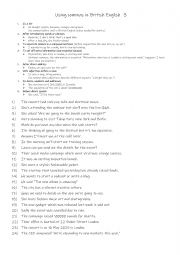
|
Using commas in British English 3
First, students need to familiarise themselves with the 8 reasons why a comma is used. Then they read the sentences and punctuate them accordingly. Answers on page 2.
Level: elementary
Age: 10-100
Type:
Downloads: 108
|
|
|
|
|












